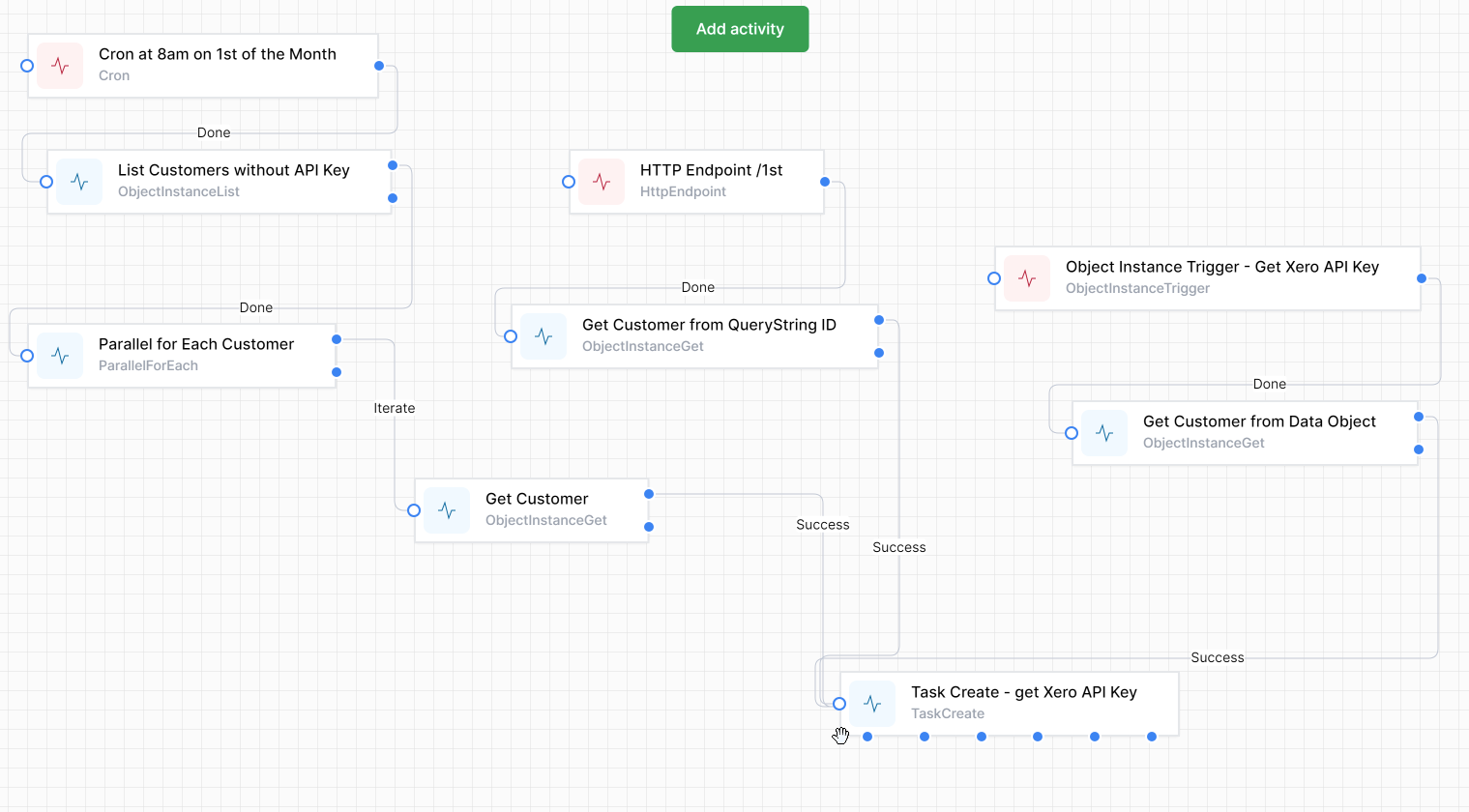Pass data to a Workflow
Accessing data passed to a workflow differs, depending on the initiation method for the workflow.
Consider this example, which has 3 starting points:
- a Cron activity to start once a month at 8am
- an HTTP Endpoint activity which will respond to /1st
- an Object instance trigger, which will start the workflow from any Customer object

The Cron activity does not collect or generate any data: in this case it is used to initiate a review of customers matching a criteria (no API Key in our example) and kicks off a task for each customer.
QueryString to HTTP Endpoint
The HTTP Endpoint uses the QueryString parameter to accept an ID passed. An example would be https://localhost:7063/1st?ID=394 In this case, 394 is an ObjectId of a customer record that we can use to test our workflow.
We named the HTTP Endpoint ‘http1st’

Now we can use that ID in our workflow: We comment out the hard-coded test number, and replace it with
activities.http1st.Output().QueryString.ID and use this to create the variable Customer

Instance & InstanceId from ObjectInstanceTrigger
The Object Instance Trigger has built-in outputs called Instance and InstanceId. The InstanceId is the ObjectId of the data object (eg a customer record) the was open when the user clicked the workflow. The Instance is the whole object as JSON. 


This is how we would use the data from the trigger:

‘Child’ Workflows - accessing data passed from the parent workflow run by the Run Workflow activity
A special JavaScript variable is available when a workflow is run by another workflow using the Run Workflow activity. The first activity in a workflow can access a special JavaScript variable called input.
Here is an example of a (parent) workflow calling a (child) workflow:


In this case we are passing a JSON object built by a small liquid script.
This is the equivalent in JavaScript: 
The child workflow can now access the data using the special input variable in the very first activity.


Subseqient activities in the child workflow will see the data as Parameters.CustomerId and Parameters.APIKey
For example, in JavaScript it would be getVariable("Parameters").APIKey and liquid would be ``
Remember World of Workflows is Case Sensitive. Ensure you use a consistent case when referring to variable and field names.